Abstract
A compost production system was employed to supply uniform material for controlled experiments of factorial design. Over a 96-h composting period, the cumulative amount of CO2 evolved was maximal at 56 to 60°C, an aeration rate that left an O2 residual of 10 or 18% in the exhaust gas and a moisture content of 60% wet weight. Carbon dioxide evolution was submaximal at 64°C and higher.
Full text
PDF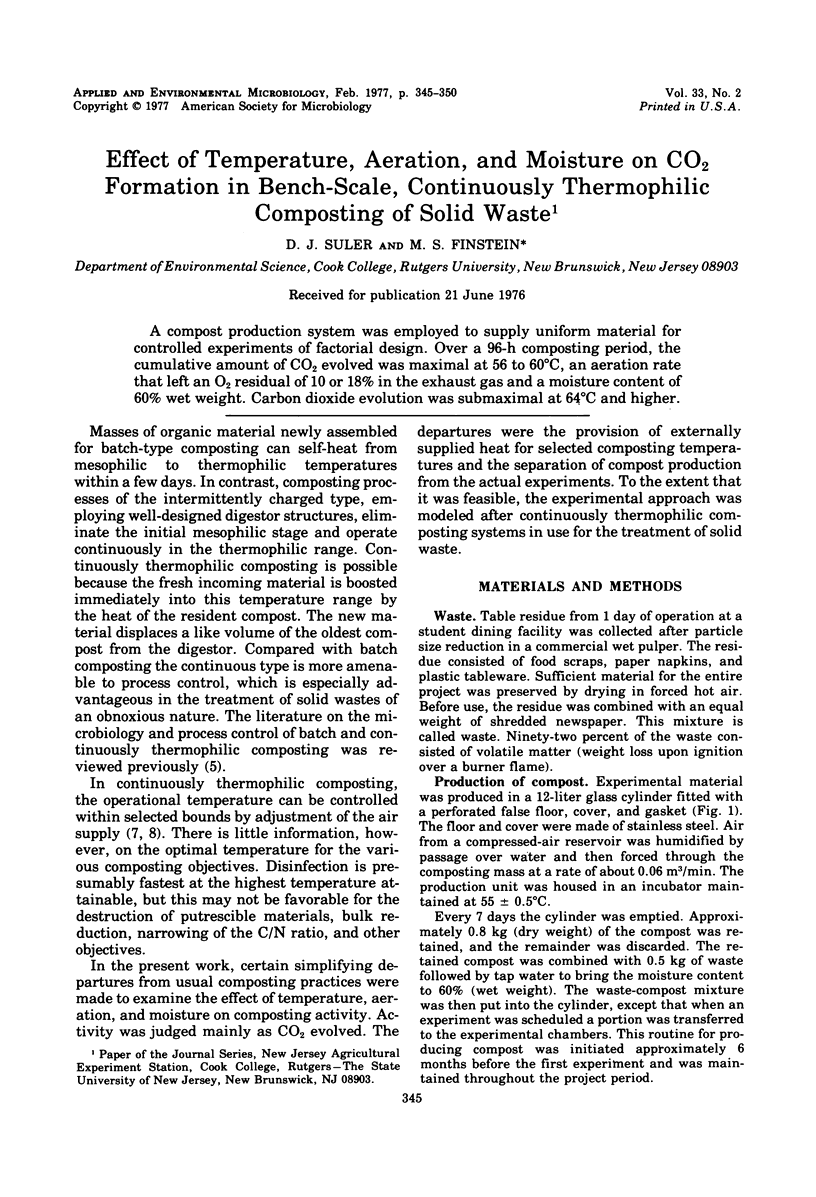
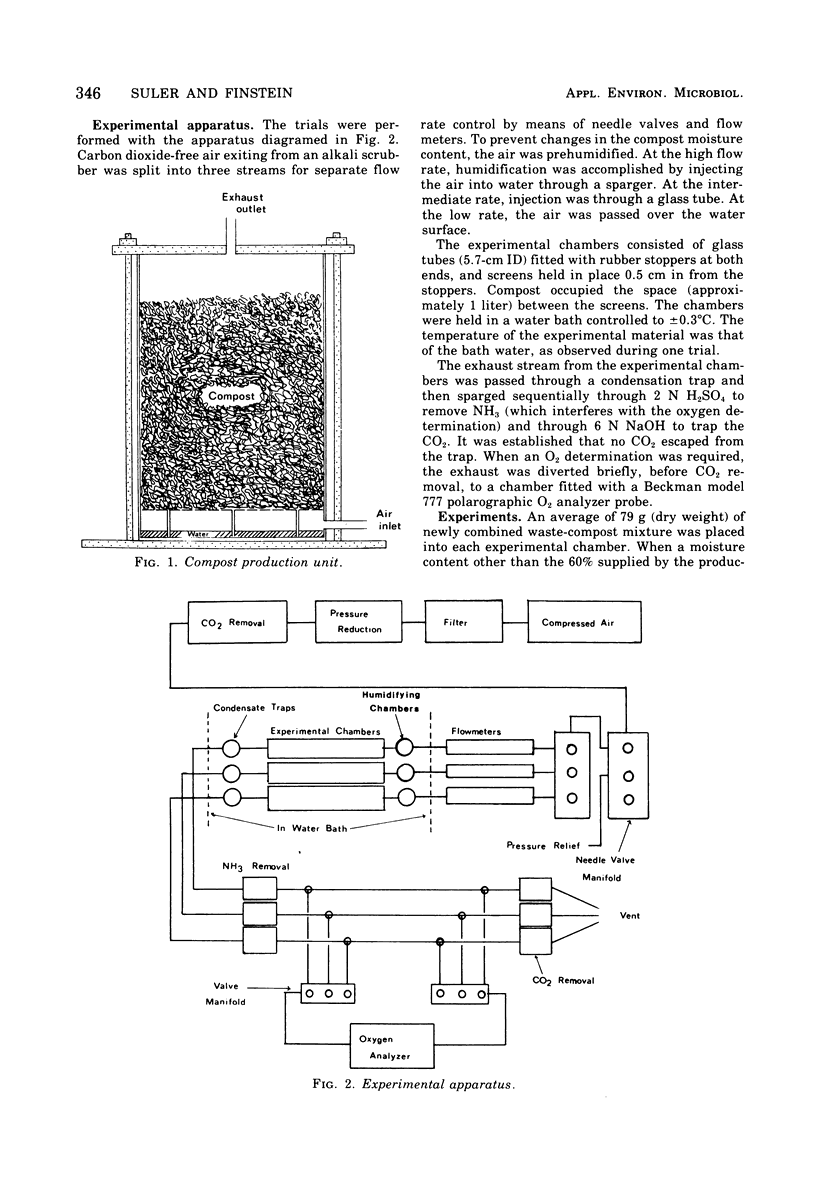
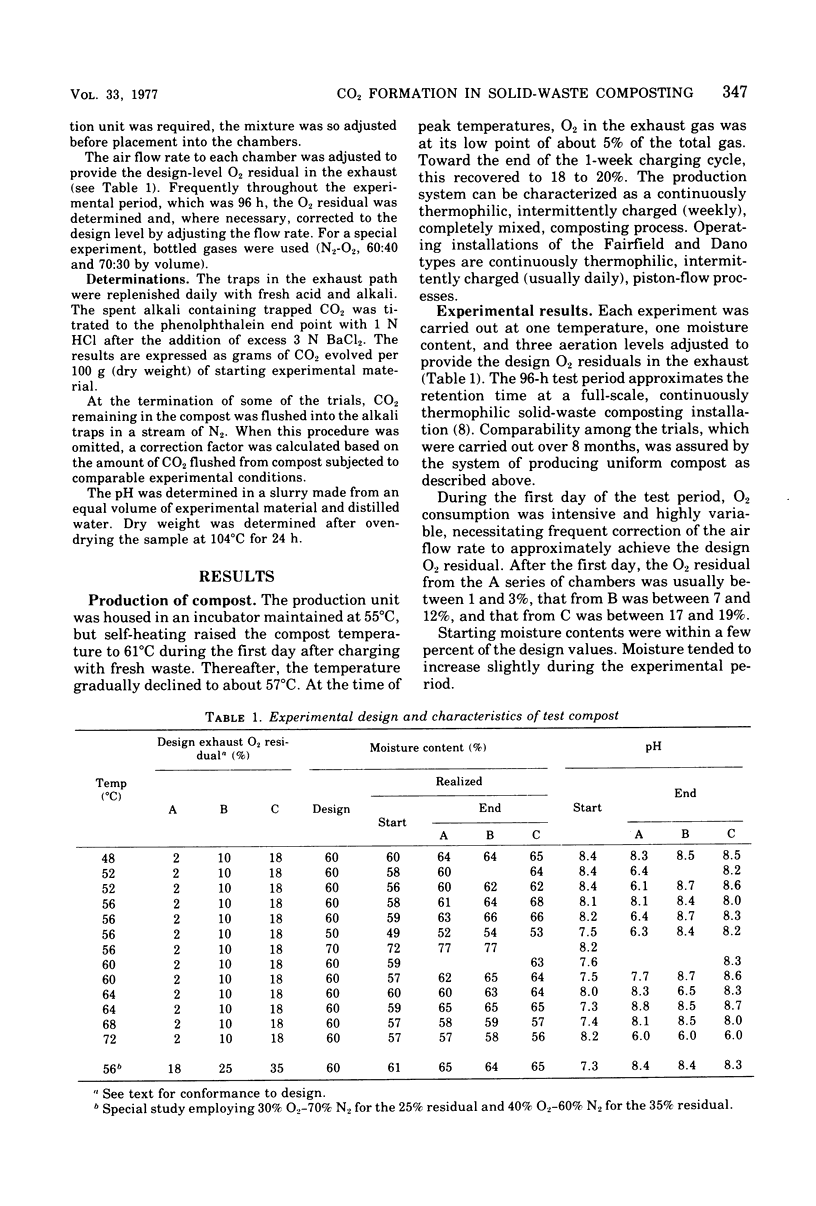
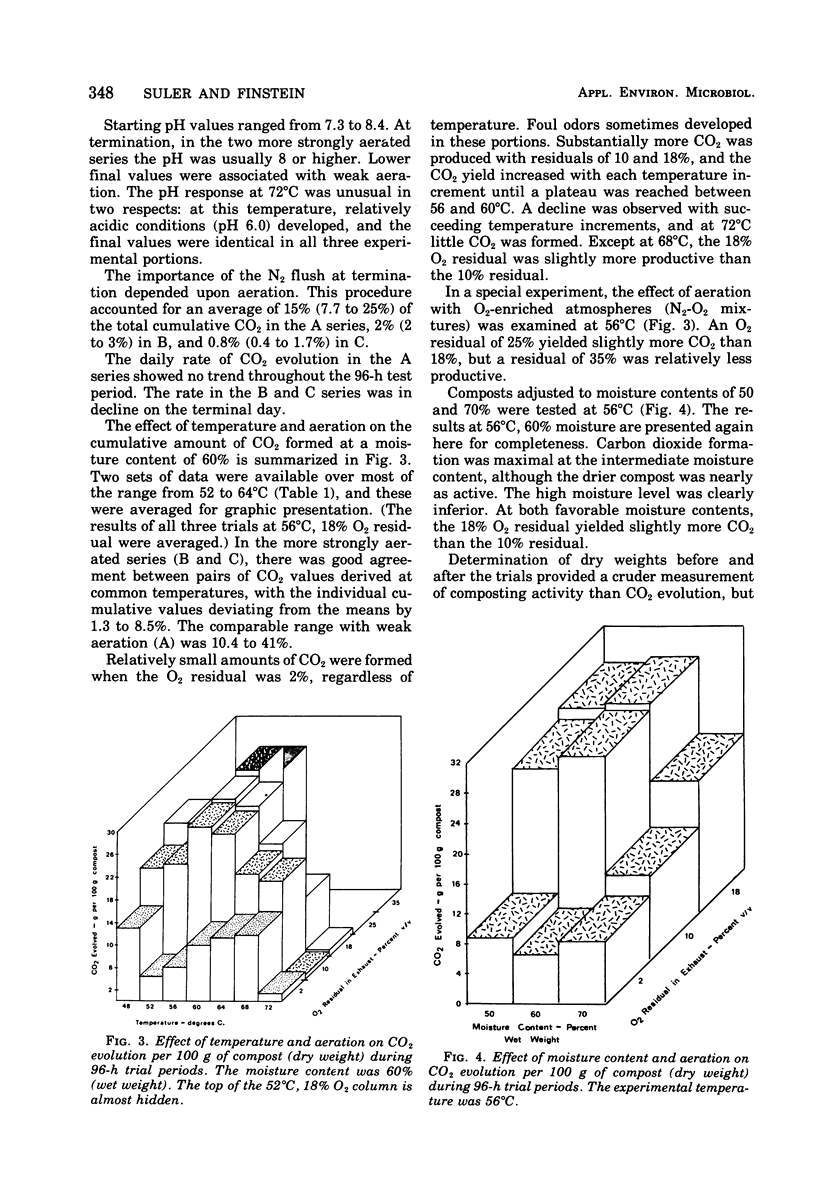
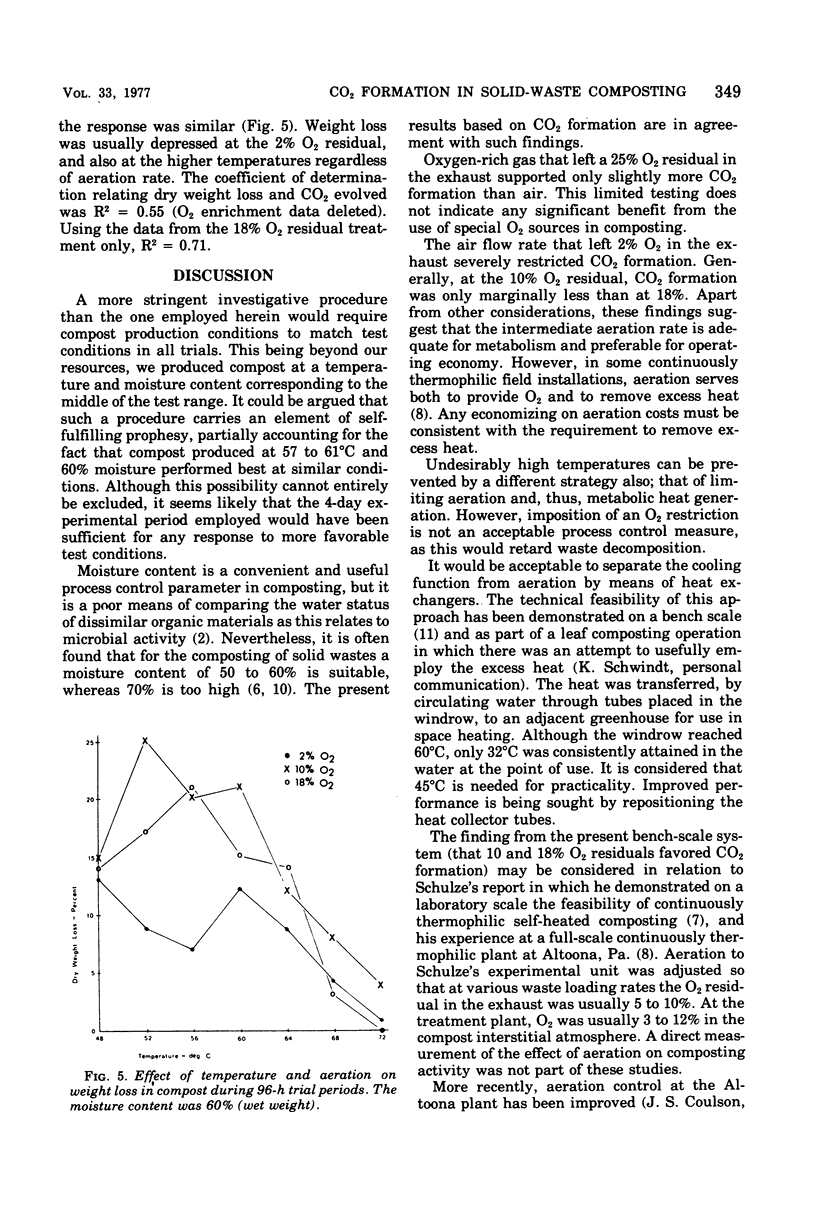
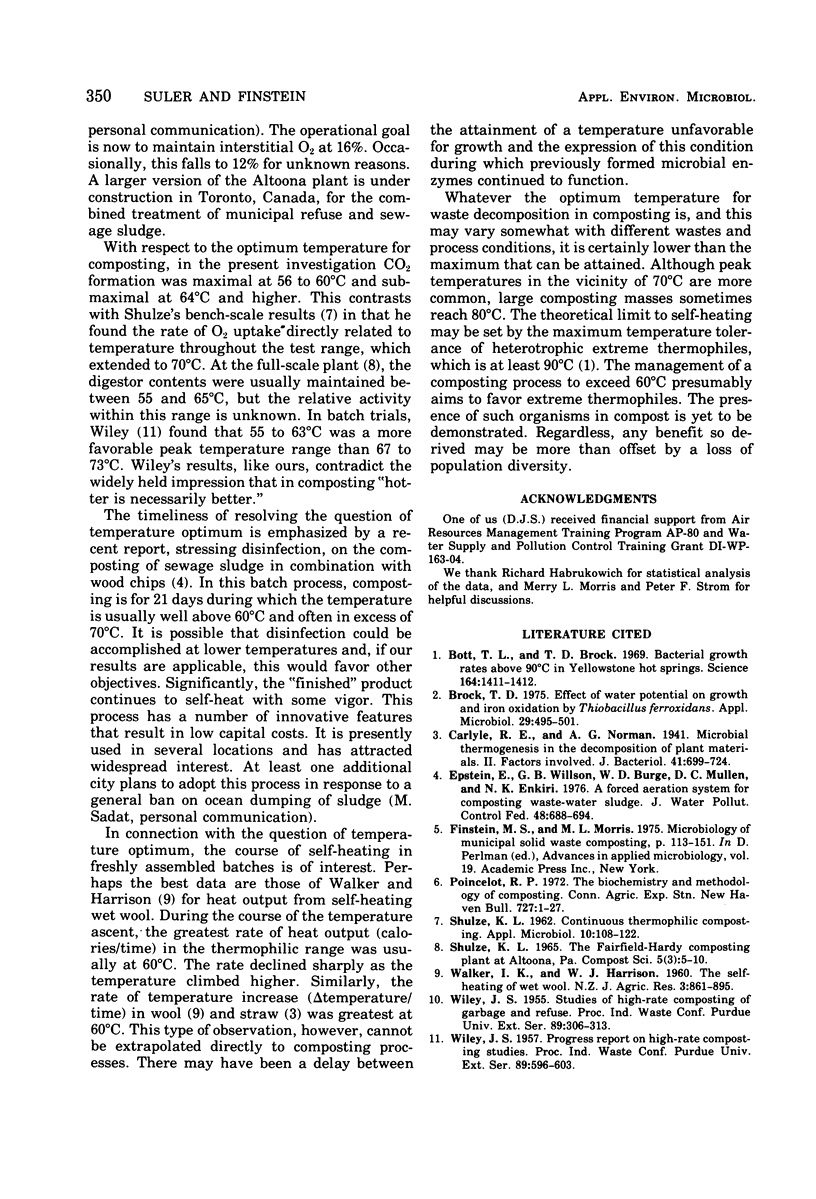
Selected References
These references are in PubMed. This may not be the complete list of references from this article.
- Bott T. L., Brock T. D. Bacterial growth rates above 90 degrees C in Yellowstone hot springs. Science. 1969 Jun 20;164(3886):1411–1412. doi: 10.1126/science.164.3886.1411. [DOI] [PubMed] [Google Scholar]
- Brock T. D. Effect of water potential on growth and iron oxidation by Thiobacillus ferrooxidans. Appl Microbiol. 1975 Apr;29(4):495–501. doi: 10.1128/am.29.4.495-501.1975. [DOI] [PMC free article] [PubMed] [Google Scholar]
- Carlyle R. E., Norman A. G. Microbial Thermogenesis in the Decomposition of Plant Materials: Part II. Factors Involved. J Bacteriol. 1941 Jun;41(6):699–724. doi: 10.1128/jb.41.6.699-724.1941. [DOI] [PMC free article] [PubMed] [Google Scholar]
- Finstein M. S., Morris M. L. Microbiology of municipal solid waste composting. Adv Appl Microbiol. 1975;19:113–151. doi: 10.1016/s0065-2164(08)70427-1. [DOI] [PubMed] [Google Scholar]
- SCHULZE K. L. Continuous thermophilic composting. Appl Microbiol. 1962 Mar;10:108–122. doi: 10.1128/am.10.2.108-122.1962. [DOI] [PMC free article] [PubMed] [Google Scholar]


